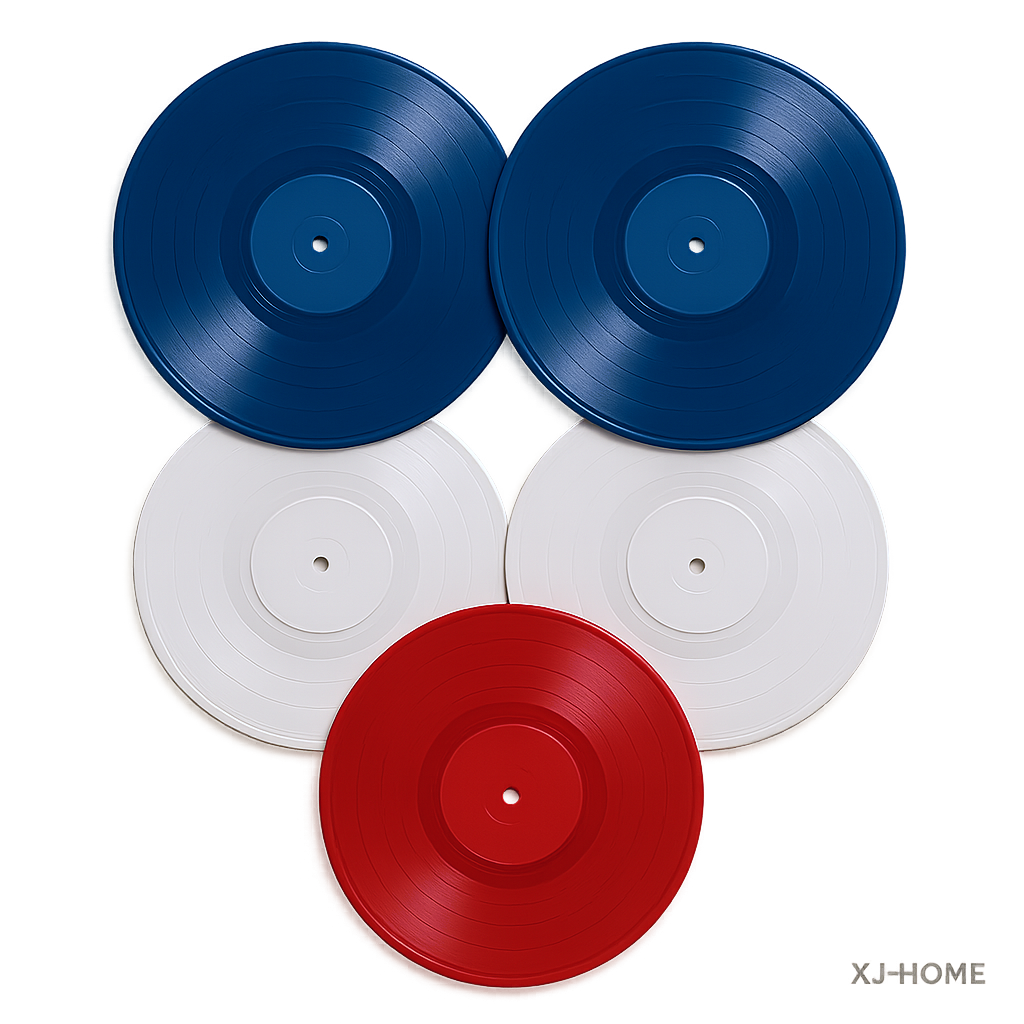The beauty of analog audio is its tangible nature, but this physicality also means that, from time to time, things can go awry. A sudden hum, a skipping record, or distorted sound can quickly sour the vinyl listening experience. But fear not! Most common turntable issues are surprisingly straightforward to diagnose and resolve with a bit of systematic troubleshooting. This guide will walk you through the most frequent culprits, helping you get back to pristine playback. We're not just offering quick fixes; we're aiming to understand the why behind the problem, a first-principles approach that empowers you in the long run.
The Cardinal Rule: Isolate the Variable
Before diving into complex solutions, remember the golden rule of troubleshooting: change one thing at a time. If you adjust multiple settings simultaneously, you'll never know which change actually solved the problem (or made it worse). Patience and a methodical approach are your best allies.
Issue 1: The Dreaded Hum or Buzz
This is perhaps the most common audiophile affliction. That persistent 50Hz/60Hz hum or a more general buzz can be maddening.
Potential Causes & Solutions:
-
Grounding Issues (The Usual Suspect):
-
The Turntable Ground Wire: Most turntables have a separate thin wire (often with a spade lug) that needs to be connected to the ground terminal on your phono preamplifier or amplifier (if it has a phono input).
-
Troubleshooting: Ensure this wire is securely connected at both ends. Try disconnecting and reconnecting it. Sometimes, a slightly loose connection is all it takes. If your turntable lacks a dedicated ground wire but hums, you can sometimes fashion one by connecting a wire from a metal part of the turntable chassis to your preamp's ground.
-
-
Ground Loops: This occurs when there are multiple paths to ground in your system, creating a loop that acts like an antenna for interference. The "ground loop" explanation can sometimes be a bit of a catch-all, but it's a real phenomenon.
-
Troubleshooting: Ensure all your audio components (turntable, preamp, amplifier, etc.) are plugged into the same power outlet or power strip if possible. If you have cable TV or other devices connected to your audio system that also have their own ground paths, try temporarily disconnecting them to see if the hum disappears. Specialized "ground loop isolators" exist but should be a last resort, as they can sometimes affect sound quality.
-
-
-
Cable Issues:
-
Poorly Shielded RCA Cables: The low-level signal from your turntable is highly susceptible to picking up interference. Cheap, unshielded, or damaged RCA cables between the turntable and the phono preamp (or amp) are common culprits.
-
Troubleshooting: Try a different, well-shielded pair of RCA cables. Keep RCA cables away from power cords.
-
-
Cartridge Wires: The tiny wires connecting your cartridge to the tonearm headshell can become loose, corroded, or damaged.
-
Troubleshooting: With the system off, gently check that each wire is securely attached to its corresponding cartridge pin. Ensure the colored bands match the pins (Red=Right Hot, White/Black=Left Hot, Green=Right Ground, Blue=Left Ground). If they look corroded, a tiny bit of contact cleaner on a Q-tip (applied very carefully) might help, but often replacement is better if they're in bad shape.
-
-
-
Component Placement & Interference:
-
Phono cartridges and phono preamplifiers are sensitive to electromagnetic interference (EMI) and radio frequency interference (RFI).
-
Troubleshooting: Move your turntable and phono preamp away from other electronic devices, especially those with large transformers (like some amplifiers), Wi-Fi routers, dimmer switches, and fluorescent lights. Sometimes, even just a few inches can make a difference. Don't stack components directly on top of each other if you can avoid it.
-
-
-
Cartridge or Tonearm Issues:
-
An internally ungrounded tonearm or a faulty cartridge can also introduce hum. This is less common but possible, especially with older or modified equipment.
-
Issue 2: Records Skipping or Repeating
A skipping record is incredibly frustrating and can even damage your vinyl or stylus.
Potential Causes & Solutions:
-
Dirty Record: This is the #1 cause. Dust, grime, or even static can cause the stylus to jump out of the groove.
-
Solution: Clean your records! Use a good quality carbon fiber brush before each play and consider a wet cleaning system for deeper grime. (Refer back to our "Record Player Care: Cleaning Tips for Pristine Vinyl" post for in-depth advice!)
-
-
Dirty or Worn Stylus (Needle): A gunked-up or worn-out stylus won't track properly.
-
Solution: Clean your stylus regularly with a dedicated stylus brush (always brush from back to front). If the stylus is old or visibly damaged (use a magnifying glass), replace it. A worn stylus not only skips but also damages your records.
-
-
Incorrect Vertical Tracking Force (VTF): This is the downward pressure the stylus exerts on the record.
-
Too light: The stylus won't stay securely in the groove and will skip easily.
-
Too heavy: Can cause distortion and excessive record wear (though less likely to cause skipping than too little force).
-
Solution: Adjust your tonearm's counterweight to set the VTF according to your cartridge manufacturer's recommendation (usually between 1.5 and 2.5 grams for most Moving Magnet cartridges). A digital stylus force gauge is a highly recommended tool for accurate VTF setting. For a good overview of VTF and how to set it, the Vinyl Factory has a helpful guide.
-
-
Incorrect Anti-Skate Setting: Anti-skate counteracts the natural inward pull on the tonearm.
-
If set too low, the stylus can jump inwards. If too high (less common for skipping), it might jump outwards on loud passages.
-
Solution: Set the anti-skate dial to match your VTF (e.g., if VTF is 1.8 grams, set anti-skate to 1.8). This is a general starting point; some prefer to fine-tune using a test record.
-
-
Turntable Not Level: If your turntable isn't perfectly level, gravity will pull the tonearm to one side, encouraging skipping.
-
Solution: Use a small spirit level (bubble level) on the platter to ensure the turntable is perfectly flat. Adjust the turntable's feet if they are adjustable, or place shims underneath as needed.
-
-
External Vibrations: Footfalls on a bouncy floor or vibrations from nearby speakers can make the record skip.
-
Solution: Place your turntable on a sturdy, dedicated rack or wall shelf. Isolation feet or platforms can also help significantly.
-
-
Warped Records: A badly warped record can make it impossible for the stylus to maintain contact.
-
Solution: Minor warps can sometimes be managed with a record clamp or weight. Severe warps are often unfixable, though professional record flattening services exist.
-
Issue 3: Sound is Distorted, Muffled, or "Wrong"
Distortion can manifest in many ways – fuzzy, sibilant (exaggerated 's' sounds), or generally unclear.
Potential Causes & Solutions:
-
Dirty/Worn Stylus or Dirty Record: Again, these are primary culprits. A dirty stylus can't read the groove information accurately, and a dirty record presents a noisy surface.
-
Solution: Clean, clean, clean!
-
-
Incorrect Cartridge Alignment: If the cartridge isn't aligned correctly in the headshell, the stylus won't sit properly in the groove, leading to distortion, especially towards the inner grooves of a record (Inner Groove Distortion - IGD).
-
Solution: Align your cartridge using a cartridge alignment protractor. This can be a bit fiddly but is crucial for optimal sound. Many turntable and cartridge manufacturers provide protractors or recommend specific alignment geometries (e.g., Baerwald, Lofgren, Stevenson).
-
-
Incorrect VTF or Anti-Skate: As with skipping, incorrect settings here can lead to mistracking and distortion.
-
Solution: Re-check and accurately set your VTF and anti-skate.
-
-
Phono Preamp Issues:
-
Wrong Input: If you're plugging your turntable into a standard line-level input (like AUX, CD, Tape) without using a phono preamp (either built-in to the turntable or external), the sound will be very quiet and tinny because it lacks the necessary RIAA equalization and gain.
-
Double Preamping: Conversely, if your turntable has a built-in phono preamp AND you plug it into the PHONO input of your amplifier (which also has a preamp), you're over-amplifying the signal, resulting in loud, distorted sound.
-
Solution: Ensure your signal path is correct. Turntable -> Phono Preamp (built-in or external) -> Line-Level Input on Amp. OR Turntable (with preamp OFF or no built-in preamp) -> Phono Input on Amp.
-
-
-
Mismatched Cartridge/Phono Stage (Gain/Loading): More advanced, but if you're using Moving Coil (MC) cartridges, ensuring your phono stage has the correct gain and impedance loading settings is critical. A mismatch can lead to thin, bright, or distorted sound. This is less of an issue with common Moving Magnet (MM) cartridges.
Issue 4: No Sound or Sound Only in One Channel
Silence when you expect music is a common frustration.
Potential Causes & Solutions:
-
Basic Connectivity:
-
Solution: Check all connections: RCA cables from turntable to preamp/amp, speaker wires to amplifier and speakers. Are they plugged into the correct inputs/outputs? Are they secure? Try re-plugging them.
-
-
Amplifier/Receiver Settings:
-
Solution: Is the correct source selected on your amplifier? Is the volume up? Is the mute button engaged?
-
-
Turntable/Preamp Power:
-
Solution: Is the turntable powered on? If using an external phono preamp, is it powered on?
-
-
Stylus Protector Still On: It happens to the best of us!
-
Solution: Gently remove the plastic stylus guard.
-
-
Headshell Connection: If your turntable has a removable headshell, ensure it's properly seated and locked into the tonearm. The small pins must make good contact.
-
Cartridge Wires (Again): A detached or broken wire to one of the cartridge pins will result in sound loss in that channel.
-
Solution: Check connections as described under "Hum."
-
-
Internal Tonearm Wiring/Cable Fault: Less common, but a break in the delicate tonearm wiring or a fault in the RCA cable itself can cause signal loss.
-
Troubleshooting: Try a different RCA cable first. If the problem persists, tonearm wiring issues usually require professional repair.
-
Issue 5: Turntable Speed is Incorrect (Too Fast or Too Slow)
Music playing at the wrong pitch is a clear sign of speed issues.
Potential Causes & Solutions:
-
Incorrect Speed Selected: Most turntables have a 33⅓ RPM and 45 RPM speed selector. Ensure you've selected the correct speed for your record.
-
Belt Issues (for Belt Drive Turntables):
-
Worn/Stretched Belt: An old belt can slip, causing inconsistent or slow speed.
-
Incorrect Belt: Using a belt that's too thick, thin, long, or short can affect speed.
-
Belt Not Seated Properly: Ensure the belt is correctly positioned on the motor pulley and the platter's sub-platter or rim.
-
Solution: Replace a worn belt with one specified for your turntable model. Clean any rubber residue off the motor pulley and platter mating surfaces with isopropyl alcohol.
-
-
-
Dirty Motor Pulley or Platter Rim: Build-up of rubber residue or grime can cause belt slippage.
-
Solution: Clean these surfaces carefully with isopropyl alcohol and a cotton swab/cloth.
-
-
Motor Issues/Lubrication: An aging motor might need lubrication or, in rare cases, replacement. Some turntables have speed adjustment potentiometers (pots) that can become dirty.
-
Solution: Consult your turntable's service manual (often found online, e.g., at Vinyl Engine's Library – registration required) for lubrication points or speed adjustment procedures. Cleaning speed adjustment pots with electronic contact cleaner can sometimes help, but this should be done cautiously.
-
-
Electronic Speed Control Malfunction (for some modern tables): If your turntable has sophisticated electronic speed control, a fault here could cause issues, often requiring professional service.
When in Doubt, Seek Expertise
While many issues are user-fixable, don't be afraid to consult a professional technician if you're out of your depth, especially with valuable vintage equipment or complex electronic problems. Investing in quality components and setup tools, a philosophy we adhere to at XJ-HOME, can also prevent many issues from arising in the first place. A well-maintained system is a happy system.
Troubleshooting is a process of elimination. By approaching problems logically and understanding the fundamental ways your turntable makes music, you'll be well-equipped to keep the tunes spinning beautifully for years to come.





Leave a comment
All comments are moderated before being published.
This site is protected by hCaptcha and the hCaptcha Privacy Policy and Terms of Service apply.